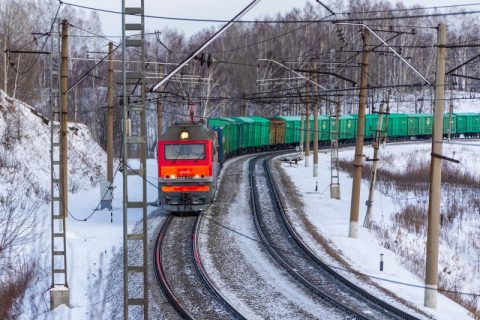Denmark’s Scan Global Logistics (SGL) has defended its continued use of Russia’s rail network to transport cargo between China and Europe, claiming its actions comply with all of the rules currently in place.
With the ongoing conflict in Ukraine, the company’s position has attracted criticism, notably from within the logistics industry. DSV CEO Jens Lund stressed this week that freight transport companies should avoid Russian state railways, RZD, as “a matter of principle.”
DSV CEO Jens Lund. Image: © DSV.
However, in a recent media interview, Scan Global’s CEO Allan Melgaard made it clear where the company stands on the issue. “We have chosen to listen to our customers, and as long as the law allows us to use this (rail freight) product, we have considered it to be the right solution.”
A senior executive source at SGL confirmed his comments to Railfreight.com and drew attention to the company’s previous statement in which it said it had shut down all of its Russian activities in 2014 following the invasion of Crimea.
The statement underlined that SGL had taken “a very active position on Russia’s aggressive behaviour and war against Ukraine, which SGL very clearly and unequivocally distances itself from.”
Scan Global’s CEO Allan Melgaard. Image: © Scan Global Logistics.
Faster and fully legal option
Like other international logistics companies, SGL uses the Russian rail line to transport goods between China and Europe, it explained. ”This line runs non-stop through Russia. The transport is fully legal and is not subject to sanctions.” SGL collaborates with a Chinese supplier to handle transport with whom it settles payment directly.
SGL uses rail freight via Russian territory because it is faster to send goods by train than by ship, given the disruption to shipping in the Red Sea and the longer journey times around Africa, the statement added.
“At the moment, it takes approximately 20-25 days to get a container from China to Northern Europe via the train connection, while it takes up to 45-50 days by ship. SGL’s customers are fully informed about where and how the transport of these shipments takes place.” The Russian rail corridor has become again a very popular transit route for cargo between China and Europe, a consequence of the shipping crisis in the Red Sea.
DHL’s perspective on the matter
Last month, DHL revealed that requests had picked up by around 40 per cent since the attacks on vessels by Yemen’s Houthi militia began at the end of last year. However, the company stressed that it “was carrying no traffic originating in or travelling to Russia” – in line with Western export restrictions imposed on Russia for its war on Ukraine. “We’re doing severe export controls, in line with applicable sanctions.”
Asked whether the company’s actions, while in conformity with sanctions against Russia, were questionable as it and its customers were effectively allowing RZD, a state-owned corporation, to generate revenue from hauling goods through Russian territory and from access to its network, a spokesperson for DHL replied:
“We understand this argument but want to clarify that, similar to our air and ocean freight operations, we book capacity on these trains. We do not operate them. Therefore, the implication that we would pay RZD is incorrect.”
Also read:
‘Going back to pre-war levels might hinder quality of services’
China-EU freight through Russia nearly back at pre-war levels
What is the real strength of Silk Road rail amidst sea shipping disruptions?
‘Rail is again an effective alternative for Eurasian transport’
